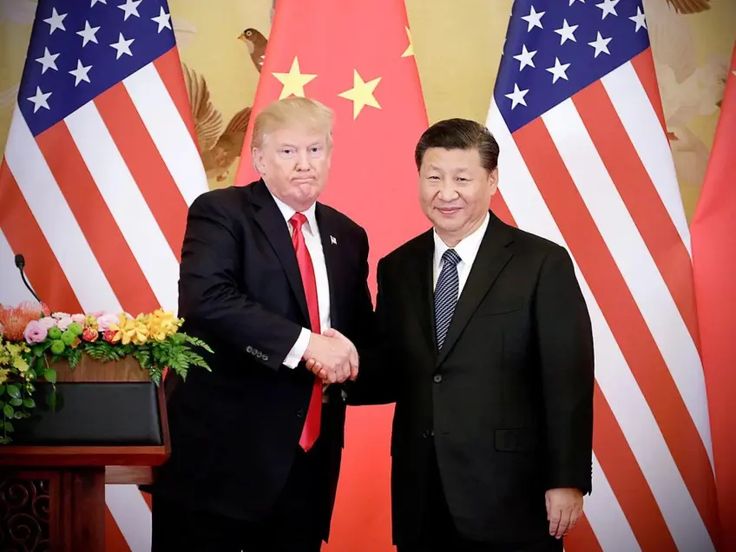Trump Foreign Policy Second Term marks a significant shift in the United States’ global strategy—one that prioritizes countering China’s growing power rather than weakening traditional alliances. According to a recent note by BCA Research, “Trump’s foreign policy is ultimately about countering China, not destroying US alliances.” As the 2024 U.S. elections loom and global tensions continue, Trump’s second-term agenda is taking clearer shape—with China at the center of U.S. foreign and economic policy planning.
Tariffs and Trade Measures: China in the Crosshairs
U.S. Tariff Levels to Rise by 2029
A key pillar of Trump Foreign Policy Second Term is the use of aggressive tariffs and trade barriers. BCA Research notes, “By 2029, the general level of US tariffs will be higher than in 2024.” However, unlike his first term, these measures will largely spare allies and focus squarely on China.
This strategic redirection reflects a broader U.S. intent to isolate China economically while maintaining solid trade ties with Europe and other allies.
Restricting China’s Economic Rise
Beyond tariffs, investment barriers and technology transfer restrictions are expected to intensify. Washington aims to curb Beijing’s influence in critical sectors such as semiconductors, AI, and renewable energy. This calculated economic warfare is a long-term effort to prevent China from overtaking the U.S. as the dominant global power.
Alliances Under Pressure—But Not Broken
Stronger NATO, Not Weaker
Initial fears that Trump would abandon NATO have been largely dispelled. Instead, his second-term policy pushes European countries to take greater responsibility for their own defense. Rather than pulling back, the U.S. is recalibrating its role—encouraging Europe to shoulder more of the financial and military burden.
Trump’s Russia Diplomacy: A Counter-China Strategy
Trump Foreign Policy Second Term also includes a diplomatic reset with Russia. According to strategists, Trump’s outreach to Moscow—possibly including a ceasefire deal in Ukraine—is not aimed at strengthening Russia, but at preventing it from becoming too closely aligned with China.
A weakened but independent Russia is seen as a preferable outcome for U.S. foreign policy, preserving the balance of power in Eurasia and limiting China’s sphere of influence.
Strategic Shift Beyond Trade
BCA emphasizes that “U.S.-China competition is strategic and not only about trade.” Trump’s second-term foreign policy reflects a deeper realignment, blending economic tools with military partnerships and diplomatic pressure. The intent is to create a global environment where China remains contained both economically and geopolitically.
Global Economic Impact and Risk Outlook
Rising Market Volatility and Investor Caution
Markets have already started reacting to expectations of renewed trade wars. Increased tariffs and economic decoupling from China could slow global growth, disrupt supply chains, and raise costs for U.S. businesses. Still, the administration plans to shield key allies from these shocks to keep them economically aligned with Washington.
Recession Risk and Long-Term Consequences
As global manufacturing stays weak and interest rates remain high, the risk of a global recession cannot be ruled out. Yet, analysts suggest that these policies are not just short-term tactics but a strategic framework that could outlast Trump’s presidency.
“If Trump’s policies can be explained from the perspective of the US’s rational self-interest, then they are not simply the outgrowth of his head. They may last longer than his four years in office,” BCA stated.
also read this :- 2025: Unified Regulatory Framework for Pension Schemes Announced by Government
Conclusion: A Calculated Foreign Policy Realignment
Trump Foreign Policy Second Term represents a calculated shift in U.S. strategy—a reorientation focused more on managing the China threat than dismantling international partnerships. From economic isolation tactics to redistributing military responsibilities among allies, the agenda is clear: assert American dominance while minimizing reliance on any single power bloc. Whether this approach achieves long-term global stability or triggers unintended economic fallout remains to be seen.
FAQs – Trump Foreign Policy Second Term
Q1. What is the main focus of Trump’s foreign policy in his second term?
A: The focus is countering China through economic and geopolitical strategies.
Q2. Will NATO suffer under Trump’s second term?
A: No. Trump seeks to strengthen NATO by encouraging higher defense spending by member countries.
Q3. How are tariffs expected to change?
A: Tariffs are projected to increase, primarily targeting China while sparing U.S. allies.
Q4. What’s the logic behind warming ties with Russia?
A: To prevent Russia from becoming overly dependent on China, preserving strategic balance.
Q5. Are recession risks increasing due to these policies?
A: Yes, but Washington plans to mitigate the impact on allied economies.
foreign policy research institute
Disclaimer-Content provided by Money Flow Insight is for informational purposes only. Please consult a professional before making financial or investment decisions.





One thought on “Trump Foreign Policy Second Term: Countering China and Strengthening U.S. Alliances”